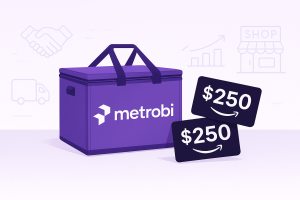Did you know that Facebook ads fail 75% of the time? Not because the platform is broken, but because business owners pick the wrong ad formats for their goals.
This matters because Facebook has 2.9 billion monthly users. But reaching them effectively isn’t about having the biggest budget. It’s about the stories ads using the right ad format at the right time.
Here’s what most business owners don’t know about poll ads: Each Facebook ad type serves a specific purpose. Image ads build awareness. Video ads create emotional connections. Carousel ads showcase product features. Collection ads turn mobile browsers into buyers.
Pick the wrong type, and you’re throwing money away. Pick the right one, and you could see returns like our watch client.
In this guide, you’ll learn:
The main types of Facebook ads, such as video ads, image ads, collection ads, etc.
When to use each type for maximum impact
How to match ad formats with business goals
Real budget numbers and expected returns
Step-by-step instructions for creating each Facebook ad format
Let’s turn your Facebook page and advertising from a money pit into a profit machine.
Metrobi drivers are rated 4.97/5
Trusted by local businesses for:
- Background-checked professionals
- Specialized in business deliveries
- Same drivers for consistency
- 4.97/5 average delivery rating
Understanding the Types of Facebook Ads
Learn the top five Facebook ad formats.
Find out which format fits your business goals.
Get tips on engaging your audience effectively.
Image Ads
The go-to choice for event ads for many businesses. Image ads are simple yet very effective. Image ads are perfect for raising brand awareness without too much effort. You should use a clear image and straightforward text to grab attention quickly. With 8 million active advertisers on Facebook pages, standing out is key. These Facebook advertising options work particularly well for small businesses aiming to introduce their brand to a new audience.
Pros:
Easy to create and manage for different collection ads.
Quick to produce, no video editing required.
Perfect for catching the eye with strong visuals.
Cons:
It may not be as engaging as videos.
Limited storytelling ability for story ads.
Video Ads
Video ads are a powerful tool for emotional engagement. These video ads are more immersive than static images, helping businesses tell their brand stories effectively. Videos can range from short clips to longer narrative pieces. Those videos can be used as story ads as well.
Pros:
Video ads have a high engagement potential on a Facebook page.
Great for storytelling and emotional connection by story ads.
Supports detailed product demonstrations.
Cons:
These video ads are more complex to produce.
Requires good quality production to be effective. For different ad formats.
Carousel Ads
Carousel ads let you showcase multiple images or videos in one place. This can be highly effective for brands with a range of products. Each card within the carousel can have its own link, making this format excellent for demonstrating product lines or features.
Pros:
More space to showcase various products.
Each image has a link, driving specific actions.
Versatile for storytelling and feature highlights.
Cons:
It can become cluttered if not well-designed.
Requires multiple high-quality images or videos.
Slideshow Ads
Slideshow ads are a cost-effective way to create video-like ads using static images. Slideshow ads are easy to make and load quickly, even in areas with slow internet speeds. These slideshow ads combine images, text, and sound to make dynamic ads that create a video experience without high production costs.
Pros:
Slideshow ads are economical compared to video ads.
Quick to load, ensuring better reach.
Ideal for showcasing product catalogs or seasonal promotions.
Cons:
Limited interactivity.
Less engaging than traditional videos.
Collection Ads
Collection ads focus on mobile users, offering an easy browsing experience. These collection ads open to a full-screen experience when a single image is clicked, showcasing your products in an immersive way. Collection ads are great for encouraging users to explore and shop directly within the ad.
Pros:
Highly interactive and engaging.
Ideal for product discovery on mobile devices.
Integrates seamlessly with shopping catalogs.
Cons:
Best suited to brands with multiple products.
It can be overwhelming if not structured well.
Targeting Strategies for Facebook Advertising: Optimizing Your Approach
Save money with better targeting.
Improve conversions with smart reach.
Learn how to enhance ad relevance.
Defining Your Audience by Facebook Ad Formats
Finding the right audience is key to successful Facebook ads. You can begin by using demographics, interests, and behaviors to narrow down potential customers. These elements help paint a clear picture of who you want to reach. For instance, age and location are demographics, while interests are activities like yoga or cooking. Behaviors might include past shopping habits or device usage. Crafting buyer personas is the next step. These personas include more details like challenges and goals, which allow ads to speak directly to them. This method increases the chances of your message resonating with the targeted audience.
Lookalike Audiences
Lookalike audiences are a powerful tool for reaching new users who share traits with existing customers. By analyzing the profiles of your best customers, Facebook identifies and targets similar individuals. For example, if your existing clients are mainly women, ages 25-35, interested in fashion, the platform will find others with similar profiles.
Retargeting Strategies
Retargeting keeps your Facebook ads in front of people who have already shown interest in your product catalog brand. This approach involves targeting users who visited your website, engaged with your Facebook ads, or abandoned a cart. It nudges them to revisit your site or complete an action like purchasing or signing up for a newsletter. The key benefit is higher conversion rates, as you’re reaching those already familiar with your brand.
Optimizing Types of Facebook Ads Formats and Campaigns for Better Results
Improve engagement with sharp ad copy.
Increase efficiency through A/B testing.
Control costs with budget management.
Crafting Effective Facebook Advertising Copy
Good Facebook ad copy grabs attention and communicates clearly. First, you should understand your audience. What do they care about? What problem does your product solve for them? Keep this in mind while writing.
Clear and Concise Messaging: It is better to use simple language and avoid fluff. Your audience should know exactly what you’re offering. If the Facebook ad text is long, try to reduce it without losing meaning. Word choice is key. Imagine someone scrolling by quickly; will your message hold their attention? The first few words matter the most.
Strong Calls to Action (CTA): Every Facebook ad needs a purpose. Your message should motivate action. Whether it’s “shop now,” “learn more,” or “sign up today,” make the action clear. CTA buttons should be visible and relevant to your ad’s goal. You can test different CTAs to see which works best.
A/B Testing
Testing lets you instantly experience Facebook ads so you understand what appeals to your audience. Create two versions of an ad. Change only one element at a time: headline, image, or CTA.
Experiment with Different Elements: You can start with the headline. Does a question work better than a statement? Next, you should try different visuals and test images against graphics to see which resonates more.
Identify What Works Best: Analyze how each version performs. Look for patterns. Did a particular image lead to more clicks? Was the CTA effective? Use this data to inform future Facebook ads. This process helps refine your campaign and increases your chances of success.
Budget Management for Facebook Ad Formats
Setting and managing your ad budget is crucial. Overspending is easy if you don’t set clear limits.
Set Realistic Budgets: Consider what you can afford. You should start small and adjust as you see the return on investment. Align your budget with the campaign’s goals.
Allocate Funds Based on Performance Data: Once you have some results, shift funds to the most effective ad manager. It is better to track spending regularly. If a Facebook ad isn’t performing, revise your approach or allocate funds elsewhere.
Each step in this process builds a stronger, more effective campaign. By using lead ads, crafting clear copy, testing what works, and managing your budget, you get the most from your Facebook ads. To further enhance your ad strategy, consider incorporating retargeting techniques. By effectively using Facebook retargeting ads, you can drive conversions and improve your return on investment, ensuring that potential customers who have previously engaged with your brand are reminded of what you offer.
Measuring Facebook Advertising Success: Key Metrics and Indicators
Understand conversion tracking to measure ad success.
Analyze user engagement to optimize content.
Learn about return on ad spend for profitability insights of Facebook Page Ads.
Tracking Conversions
Conversion tracking or Messenger Ads are the backbone of understanding how your investments turn into tangible outcomes. To do this, leverage tools like Meta Pixel and Conversions API. These tools allow you to track actions such as purchases, sign-ups, or app downloads, all of which inform your understanding of messenger ads’ effectiveness. Facebook’s Messenger ads reached 1.98 billion people in 2024, indicating a vast potential audience. Yet, measuring reach is not sufficient. Dive deeper into messenger ads and how these users interact and convert.
A refined strategy integrates conversion tracking across digital platforms, aligning them with your broader business goals and objectives.
Analyzing Engagement Metrics
Engagement metrics illuminate how users connect with your ads. Likes, shares, and comments are just the beginning. They reflect initial interest and are essential for gauging resonance with audiences. Track these metrics to assess how engaging and relevant your content is. Calculating the engagement rate is crucial: divide total engagements by total reach, then multiply by 100%.
Engagement serves multiple roles. On the one hand, it’s a direct indicator of content appeal. However, it also helps adjust strategies for future content creation. If engagement rates decline, you may need to revisit ad visuals, messaging, or targeting criteria—elements discussed thoroughly in “Contagious: How to Build Word of Mouth in the Digital Age” by Jonah Berger.
Monitoring Return on Ad Spend (ROAS)
ROAS is your profitability compass. It calculates the revenue generated for every dollar spent on advertising. This metric is vital for dictating budget allocations and identifying profitable campaigns. Facebook’s 2023 global revenue reached roughly $152 billion, with expectations for $170.82 billion in 2024. With such revenue benchmarks, optimizing ROAS ensures your chunk of the pie is worthwhile.
Effective ROAS analysis requires continuous tracking and adjustment of your campaigns relative to performance. If ROAS is below expected benchmarks, it may signal the need for a strategy shift—be it targeting adjustments, ad creative revamps, or budget reallocation.
While ROAS is a robust measure of success, critics caution against relying solely on it. A high ROAS might chase quick wins over sustainable growth. For those interested, “Killing Marketing” by Joe Pulizzi & Robert Rose discusses the dangers of underestimating non-quantifiable benefits, like branding and customer loyalty. It’s crucial to find the right balance.
Assessing Facebook Ad Formats Frequency
Ad frequency, the number of times an ad is shown to a user, plays a critical role in campaign effectiveness. Excessive frequency might lead to ad fatigue, causing users to ignore or react negatively to the ad. Optimal frequency maximizes exposure to messenger ads without oversaturating the audience. Striking the right balance can protect your brand from negative perceptions and keep your messaging fresh.
To understand audience tolerance levels, engage in systematic testing. Gradually adjust frequency settings and monitor shifts in key performance indicators like CTR and conversion rates. This approach sheds light on audience preferences, optimizing ad delivery systems.
Understanding Click-Through Rate (CTR)
The CTR is a metric used to evaluate the effectiveness of your ad creatives. It represents the ratio of users who click on your ad to the total number of impressions. A healthy CTR signifies that your ad content resonates with your audience, prompting active user interest. Industries like Arts & Entertainment, Real Estate, and Restaurants exhibit higher CTRs, signaling varied audience interactions across sectors. For those interested in diving deeper into how to create successful campaigns, explore this comprehensive guide on effective Facebook advertising strategies.
If you’re looking for additional insights on developing winning Facebook advertisements, referring to detailed guides or case studies can provide invaluable perspectives. Understanding different techniques and strategies that successful brands implement can often uncover new approaches that align perfectly with your business goals. Explore effective ad strategies on Facebook to elevate your advertising endeavors.
Analyzing CTR trends in your specific niche provides a blueprint for guiding creative and strategic changes. Dive into detailed analyses that reflect on how ad design, copy, and call-to-action impact user decisions.
It’s crucial to balance CTR-focused strategies with overall user engagement and conversion goals. High CTRs without conversions often indicate a disconnection between initial user interest and final action, highlighting areas for campaign refinement.














